| University | Singapore Management University (SMU) |
| Subject | Managing Developmental Athletes and Teams |
Question 1
You are the coach for a youth team preparing for the ASEAN School Games scheduled for November 2020. When Singapore entered the Covid-19 Circuit Breaker in April 2020, all sports venues were closed and group training came to a halt. Describe and explain how you woulfd develop a micro-cycle training program to help your youth athletes maintain their physical fitness levels from home during this period, for a sport of your choice.
You may use tables and pictorials to illustrate your training plan, which should include consideration of
- Age of the athletes
- Stage of development
- Goals of the athletes
- Individual abilities
- Time the athletes have
- Financial resources of the athletes
- Nutrition and hydration
Question 2
Refer to the abridged article below. Evaluate what went well and what can be improved in Coach Tauer’s strategy to manage the mental and emotional health of his men’s basketball team during the Covid-19 Lockdown.
Mental stress for athletes: From ‘let’s play’ to ‘stay home’ The Associated Press on April 22, 2020, Seasons have been on pause for weeks with no end in sight. So, too, has the competitive drive of tens of thousands of the world’s best athletes, the bottle corked by simple, sobering orders: Back off. Stay home. “This flew in the face of what they had been taught and socialized to do, which is, ‘Let’s play,’” said John Tauer, the men’s basketball coach and psychology professor at the University of St. Thomas in Minnesota.
The safety of the living room replaced the comfort of the arena. “You really don’t know what the next day holds,” Buffalo Sabres star Jack Eichel said. “Every morning you wake up, you don’t have to go to the rink, you don’t have to perform. … You’re just trying to stay busy and keep your mind in a good, healthy place.” Eichel has spent some of his quarantine time reading “The Mindful Athlete,” a book by sports psychologist George Mumford, who worked with the Chicago Bulls and taught Michael Jordan the art of meditation.
More than two decades later, the brain plays a much bigger role in the way teams teach and guide their performers. Maintaining mental fitness during the pause could be as critical to success as remaining in peak physical condition simply because athletes are facing anxiety in unprecedented ways. “This may not be a crisis for many of us yet, but it’s still a big enough shift from our daily lives where it causes us to reflect and begin to say, ‘OK, when you pull something away from me that I identify with, how is this working for me? Is this going the way I want it to?’” said Justin Anderson, team psychologist for the Minnesota Timberwolves. In an occupation built on physical performance, athletes have a short career window, and opportunities to excel are few.
Stuck with a lot of homework assignments and feeling stressed ? Take professional academic assistance & Get 100% Plagiarism free papers
For all the financial cushion many have, the identity loss during the shutdown has been severe. Their most elemental function as an employee has disappeared. In the National Football League, a letter from the league and the players’ union sent to players this month included advice on how to deal with the angst, addressing loneliness, stress, and other subjects. The global union for soccer players surveyed members and found increased levels of anxiety and depression. “It’s a really strange environment, especially for athletes when they are used to being on the field, used to being in the gym, used to working out every day,” said Carlos Bocanegra, Atlanta United’s technical director. College and high school athletes were hit hard, their careers framed by eligibility limits.
Last month, when the National Collegiate Athletic Association shut down all activity, coaches scrambled to keep tabs on their players and keep spirits up. Tauer’s team, ranked fourth in Division III, was supposed to play rival St. John’s in the national tournament until it was canceled. In his season-ending speech, he encouraged his players to apply their unique experience of being on a team toward the new reality. “Let’s do what a great teammate does, and that means think about the greater good as opposed to what my immediate wants might be right now,” Tauer said. The Timberwolves made player wellness one of their top priorities when Gersson Rosas took over a year ago as president of basketball operations.
He envisioned an innovative, holistic approach to player development to support the pursuit of a championship. “Long before this happened, we valued certain things that in a crisis become even more apparent and important,” said Robby Sikka, the team’s vice president for basketball performance and technology. Sikka cited valuing the players’ health and nutrition, being player-centric and family-oriented from the beginning. The job created for Sikka — to integrate medical, technological, and analytical knowledge and resources for improving wellness off the court and performance on it — has been vital. The week before the league shut down, he warned players, “This will be your 9/11.” Since then, he has helped coordinate player efforts to not only stay in shape with the practice facility closed but make sure mental health needs are being met.
He sees it as setting up lifelong coping skills. Anderson has paid particular attention to anxiety management. “It’s not something you either have or you don’t have. It’s something you develop, much like their shooting percentage or any other skill that they’re working on,” Anderson said. Just because they’re some of the greatest athletes in the world doesn’t mean they don’t have flaws. “At the end of the day, they have families, they have needs, they have challenges, that, if we choose to ignore them, we’re choosing to ignore them as individuals,” Rosas said. “That’s an area where we don’t want to fail.” by Dave Campbell
Question 3
(POSTER TEMPLATE) A team is a particular type of group that functions with distinctive roles guided by social norms. For each of the components listed below, explain and exemplify its contribution to team cohesion according to Beauchamp, Bray, Fielding & Eys (2005).
- Formal roles
- Informal roles
- Role clarity
- Role acceptance
- Role conflict
- Norm for productivity
- Positive norms
- Modification of norms
- Team climate Submit this as a poster in PDF format
At Singapore Assignment Help, you will get all types of assignment writing services like case study help, report writing help, essay writing help, dissertation help, thesis writing services, etc. at a very reasonable price. Our team of highly experienced assignment writers has a good understanding of writing coursework for managing developmental Athletes and team assignments.
Looking for Plagiarism free Answers for your college/ university Assignments.
- HRM331: Talent Management – Strategic Shift from the War for Talent to the Wealth of Talent
- Marginalised Populations – The Structural and Cultural Exclusion of People Experiencing Homelessness in Singapore
- CVEN3501 Assignment 2: Groundwater Modelling of Drawdown from a Pumping Bore
- CSCI312 Assignment 2: Conceptual Modelling and Implementation of a Data Warehouse and Hive Queries
- CH2123 Assignnment : Fugacity, VLE Modeling & Henry’s Law Applications
- BAFI1045 Assignment -Constructing and Evaluating Passive and Active Portfolios Based on the Straits Times Index (STI)
- PSB501EN Assignment 1: Engineering Systems Integration: A Multi-Technique Approach to Mechanical Analysis
- FIN2210E/FIN2212E Group Assignment: Financial Risk Management Analysis of Bursa Malaysia Companies
- FLM101 Assignment: A Cinematic Dissection: Stylistic Elements and Their Thematic Significance
- Assignment: Transforming Talent in the AI Era: From War to Wealth through Ecosystem Innovation

